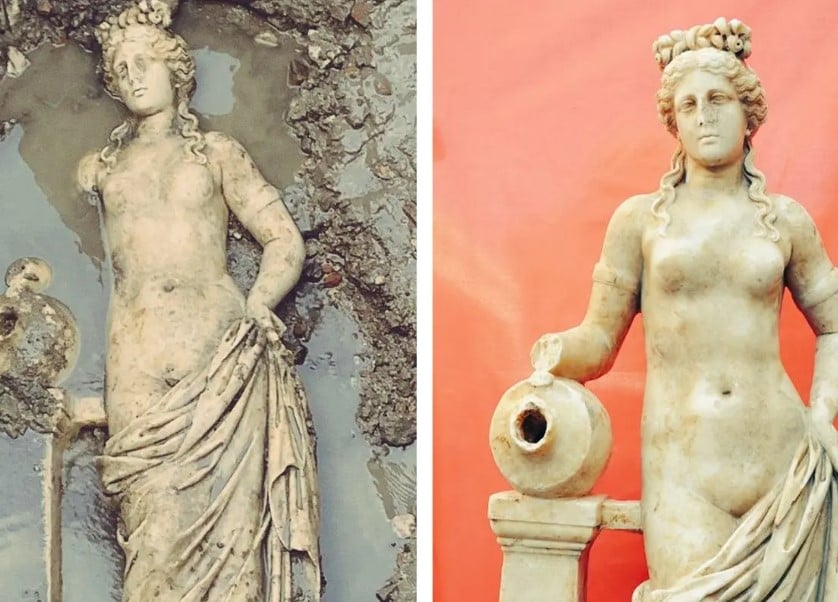
A statue of the goddess Aphrodite was uncovered recently during excavations carried out in the Ancient Greek city of Amastris in today’s Turkey.
The statue, found three meters below the surface was originally thought to depict a nymph (water fairy). However, archaeologists in Turkey have determined that the statue depicts the Ancient Greek goddess of love and beauty, identified with Venus by the Romans.
The 1.53-meter-tall statue is thought to date back to the 2nd century A.D.
Turkish daily Hurriyet reports that the statue was examined in detail by academics and experts from Bartın University and the Culture and Tourism Ministry.
20 examples of Aphrodite statue in Turkey
Experts closely examined approximately 20 examples of Aphrodite statues found in Turkey and determined that the statue had the characteristics of both a nymph and Aphrodite. Further examinations revealed that the statue was Aphrodite.
Amasra Museum Deputy Director Güray Can Aytekin said, “We introduced it as a water fairy because the area where we found it was an area that we considered as a pool. But examinations revealed that it was more like an Aphrodite.”
The Turkish archaeologist added that there are examples of this statue in the 4th century B.C. as there were S-curve works made during this classical period. The posture of this statue is also in the S position. We see this example especially in Praxiteles’ School.
“We know that this form was further shaped during the later Hellenistic period, and its copies were made in the Roman period, too,” Aytekin noted, according to Hurriyet. “We estimate that our statue is from the Roman period. It is possible to date it to the Roman period between 180 and 200 A.D., that is, in the last quarter of the second century.”
Today, Amastris, or Amasra, is a small Black Sea port town in the Bartın Province of Turkey. Situated in the ancient region of Paphlagonia, the original city seems to have been called Sesamus (Greek: Σήσαμος), and it is mentioned by Homer. The place derived its name Amastris from Amastris, the niece of the last Persian king Darius III, who was the wife of Dionysius, tyrant of Heraclea.
Aphrodite the ancient Greek goddess
In Hesiod’s “Theogony,” Aphrodite is born off the coast of Kythera from the foam (ἀφρός, aphrós) produced by Uranus’ genitals, which his son Cronus had severed and thrown into the sea.
In Homer’s Iliad, however, she is the daughter of Zeus and Dione. Plato, in his work, The Symposium, asserts that these two origins actually belong to separate entities: Aphrodite Urania (a transcendent, “Heavenly” Aphrodite) and Aphrodite Pandemos (Aphrodite common to “all the people”).
Aphrodite had many other epithets, each emphasizing a different aspect of the same goddess, or used by a different local cult. Thus, she was also known as Cytherea (Lady of Cythera) and Cypris (Lady of Cyprus) because both locations claimed to be the place of her birth.
Related: Greek and Roman Statues Found at Ancient Greek City of Knidos
See all the latest news from Greece and the world at Greekreporter.com. Contact our newsroom to report an update or send your story, photos and videos. Follow GR on Google News and subscribe here to our daily email!



